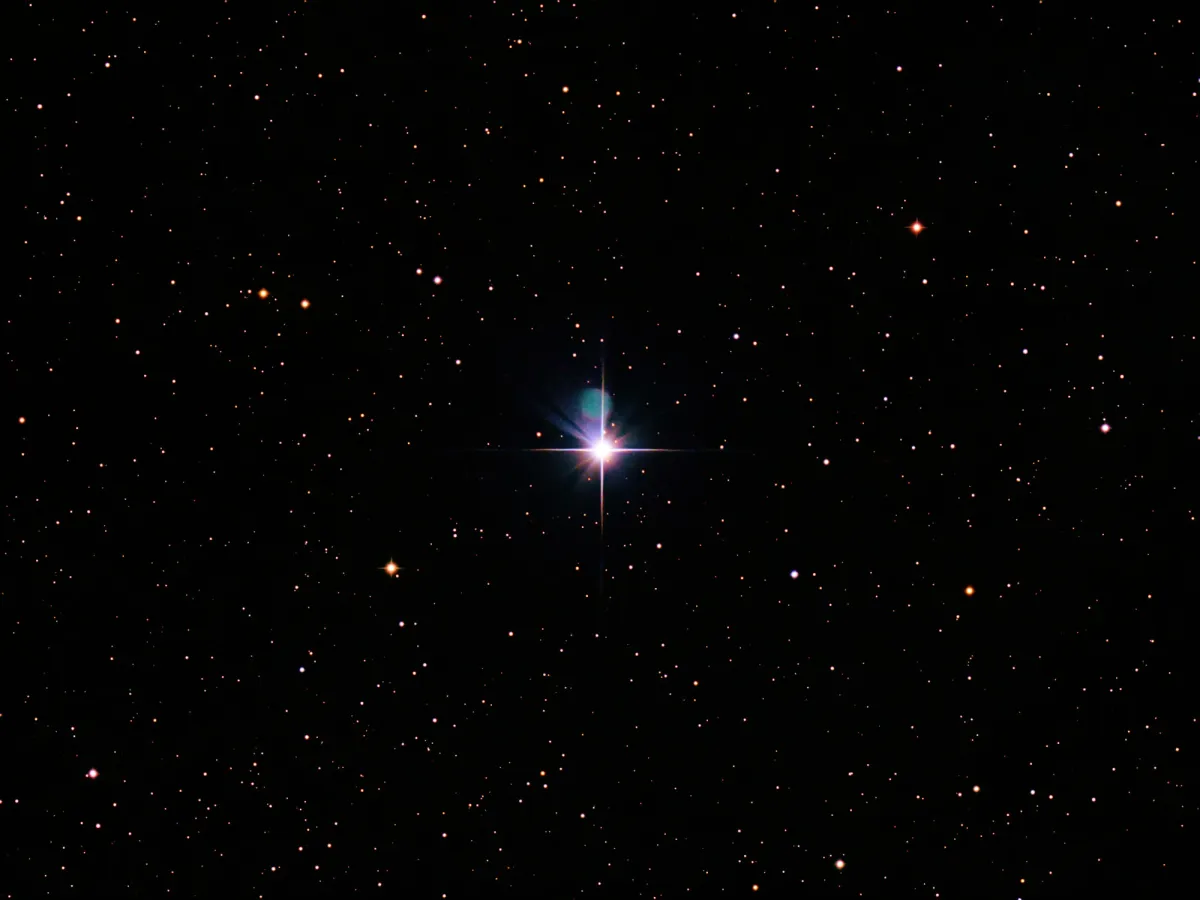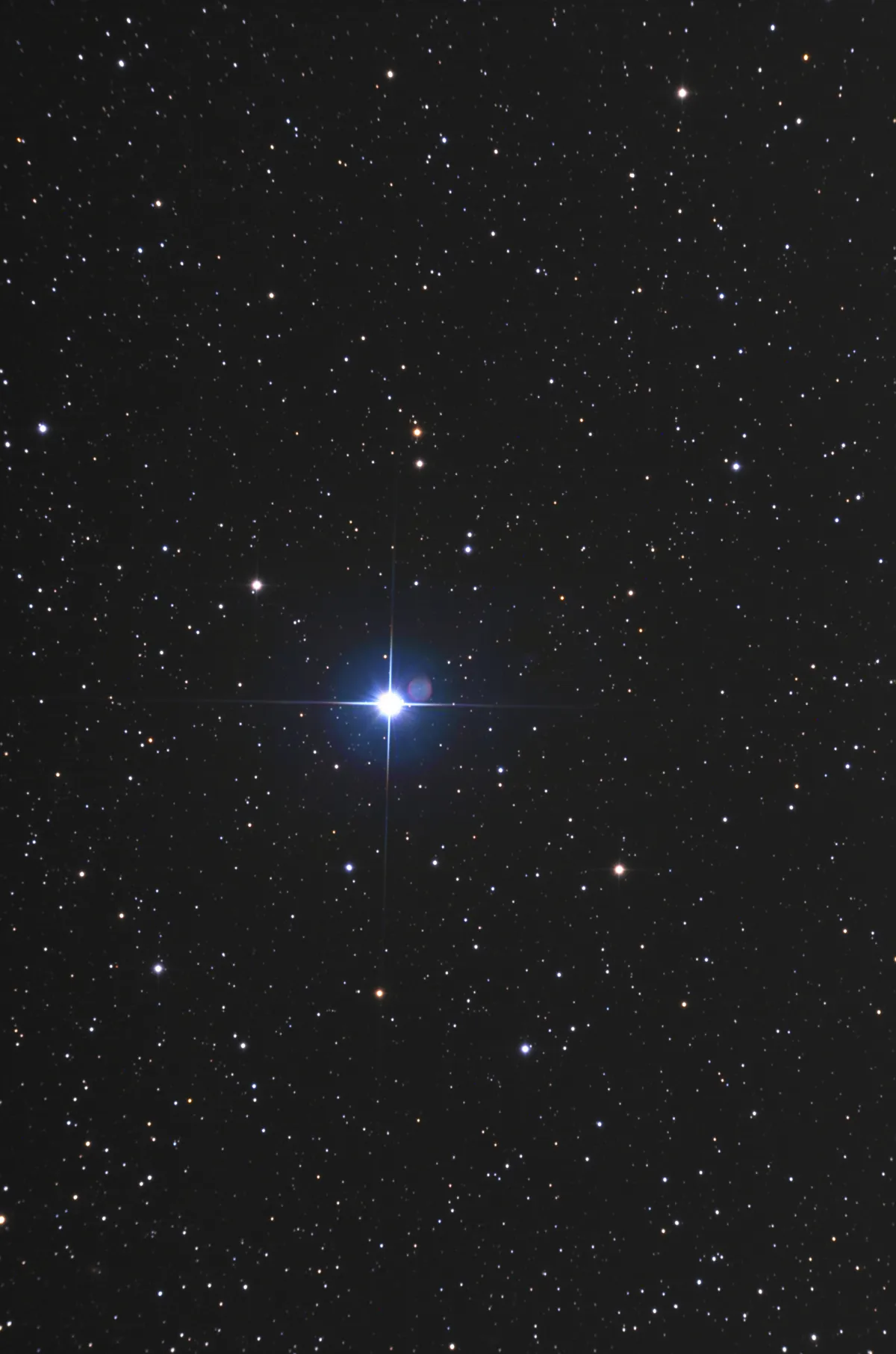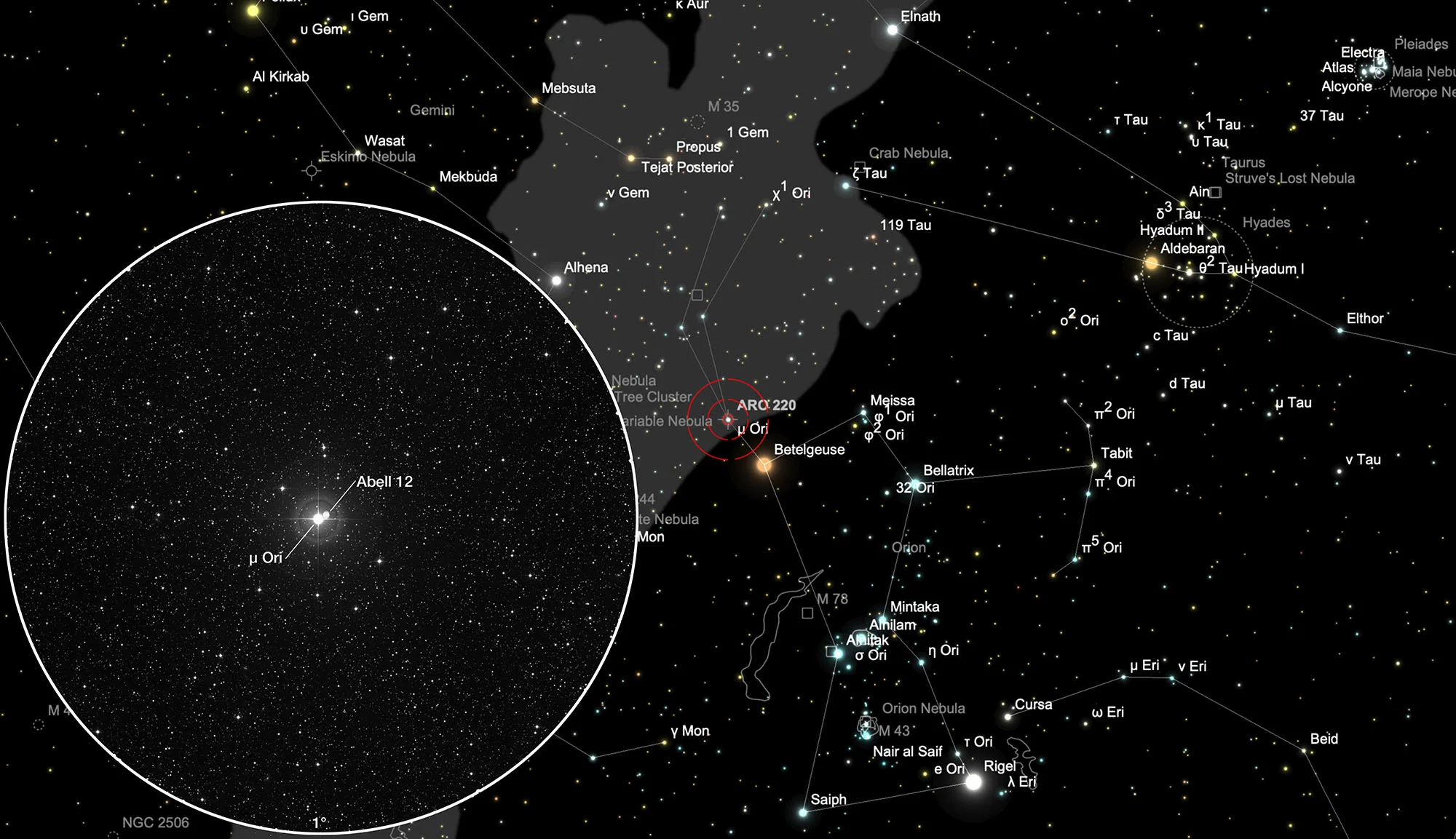Abell 12 & μ Orionis


Object Description
In 1955, George Ogden Abell published a list of planetary nebulae that were discovered on the photographic plates of the Palomar Observatory Sky Survey. Most of them are significantly larger than Abell 12 and usually have a low surface brightness, so this object is an exception among the Abell PN.
There are contradicting brightness data for the central star; Abell himself mentions 19.1 mag, the Strasbourg ESO catalog [141] gives a Johnson's B filter magnitude of 19.7 mag, while the “Deep Sky Field Guide” [22] lists 14.9 mag. There are also different data on the size: The PK67 and the Strasbourg-ESO have an optical diameter of 37", while the field guide only allows the object to be 18". Radio measurements showed a diameter of 35". Distance measurements vary from 1.7 to 2.7 kpc. [141]
| Designations | PN G198.6-06.3: A 12, PK 198-06.1, ARO 220 |
| Right Ascension (J2000.0) | 06h 02m 23s |
| Declination (J2000.0) | +09° 39' 03" |
| Dimensions | 37." (optical), 35." (radio) |
| C-Star Designations | AG82 56 |
| C-Star Magnitude | B: 19.7 |
| Discoverer | ABELL 1964 |
Finder Chart
Finding Abell 12 is fairly easy, as it is just under an arc minute west-northwest of the star μ Orionis. The latter is visible to the naked eye (4.1 mag). Whether the PN is then also visible in the eyepiece is a question of the aperture and contrast performance of the telescope, as well as the quality of the sky. On 23 December it is in opposition to the Sun and crosses the meridian at local midnight. The constellation Orion is best observed from August to May.
Visual Observation
Abell 12 is actually easy catch - if you follow the object data in the Deep Sky Field Guide. Since the planetary nebula is very close to μ Orionis, the observer can find it easily, but has a very bright star in the field of view, which makes sighting considerably more difficult. For this reason, there are so far only very few photos of the object.
200 mm aperture: Despite the obstruction by the bright star, Abell 12 is detectable under ~ 6.0 mag sky with an 8" aperture; even without a nebula filter. A very good contrast performance of the optics is important. In addition, the spikes of the secondary mirror holder should not run over the nebula in a Newton. An [OIII] filter enhances observation. — 1999, Frank H. Leiter
320 mm aperture: The PN lives up to its reputation as an object that can only be seen with high contrast performance. With a somewhat hazy, slightly turbulent sky, with the crescent of the waxing moon and slightly dusty optics, the nebula is not visible in the halo of the bright star μ Orionis without filter. With an O-III filter, it gave now and then a very dim glimpse. — 5. 2. 2022, Ibergeregg, Stefans 320 mm f/5 Dobsonian, Bernd Nies
400 mm aperture: At 145x magnification, the nebula is easily visible with and without an [OIII] filter. It appears as an almost uniformly round surface. From a magnification of 200x, the surface appears structured; it is helpful if the star μ Orionis can be moved out of the field of view. A ring fragment on the side facing away from the star is noticeable. There is a faint star at its southern end. The central star could not yet be visually detected. — 1999, Frank H. Leiter
